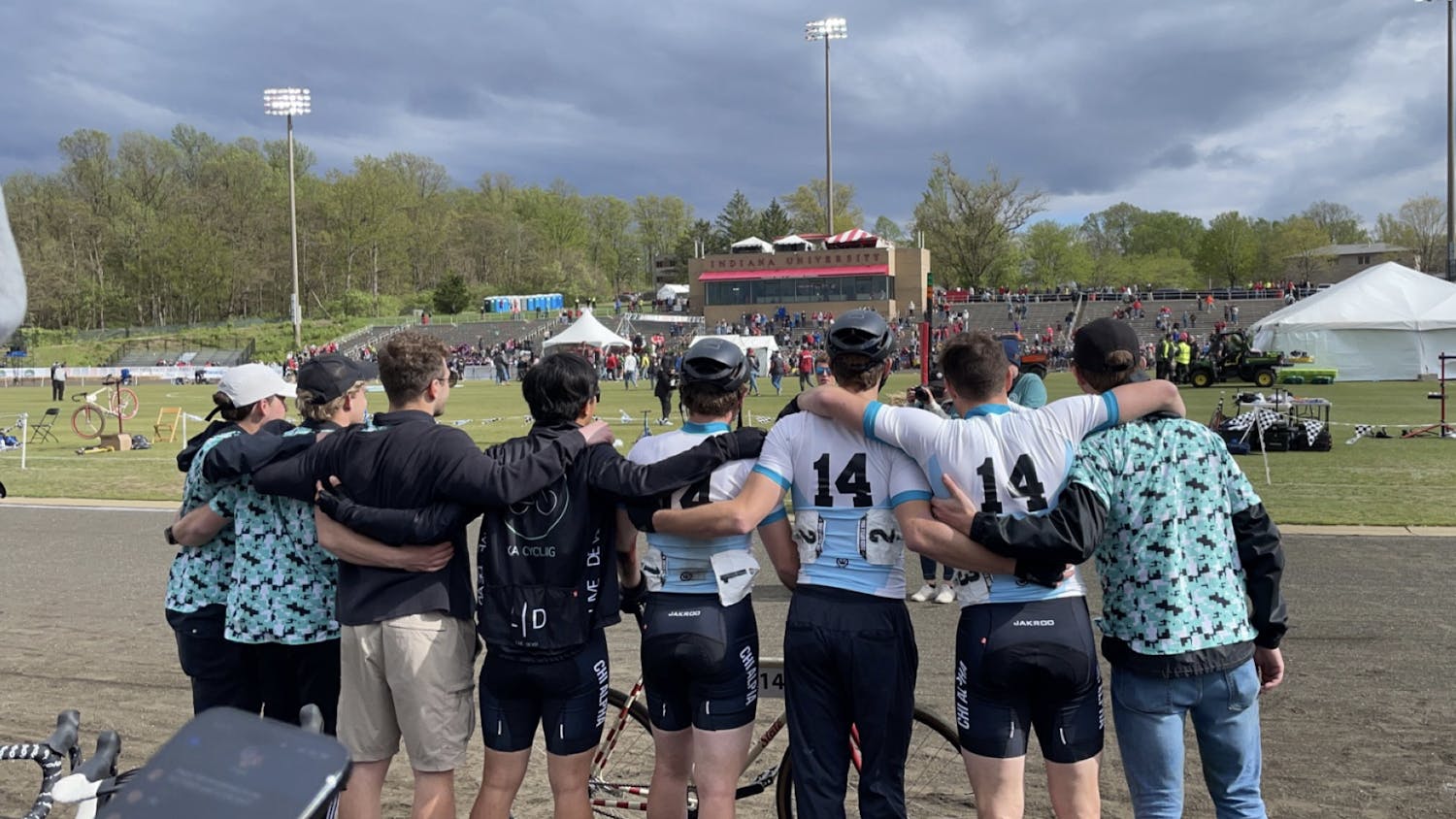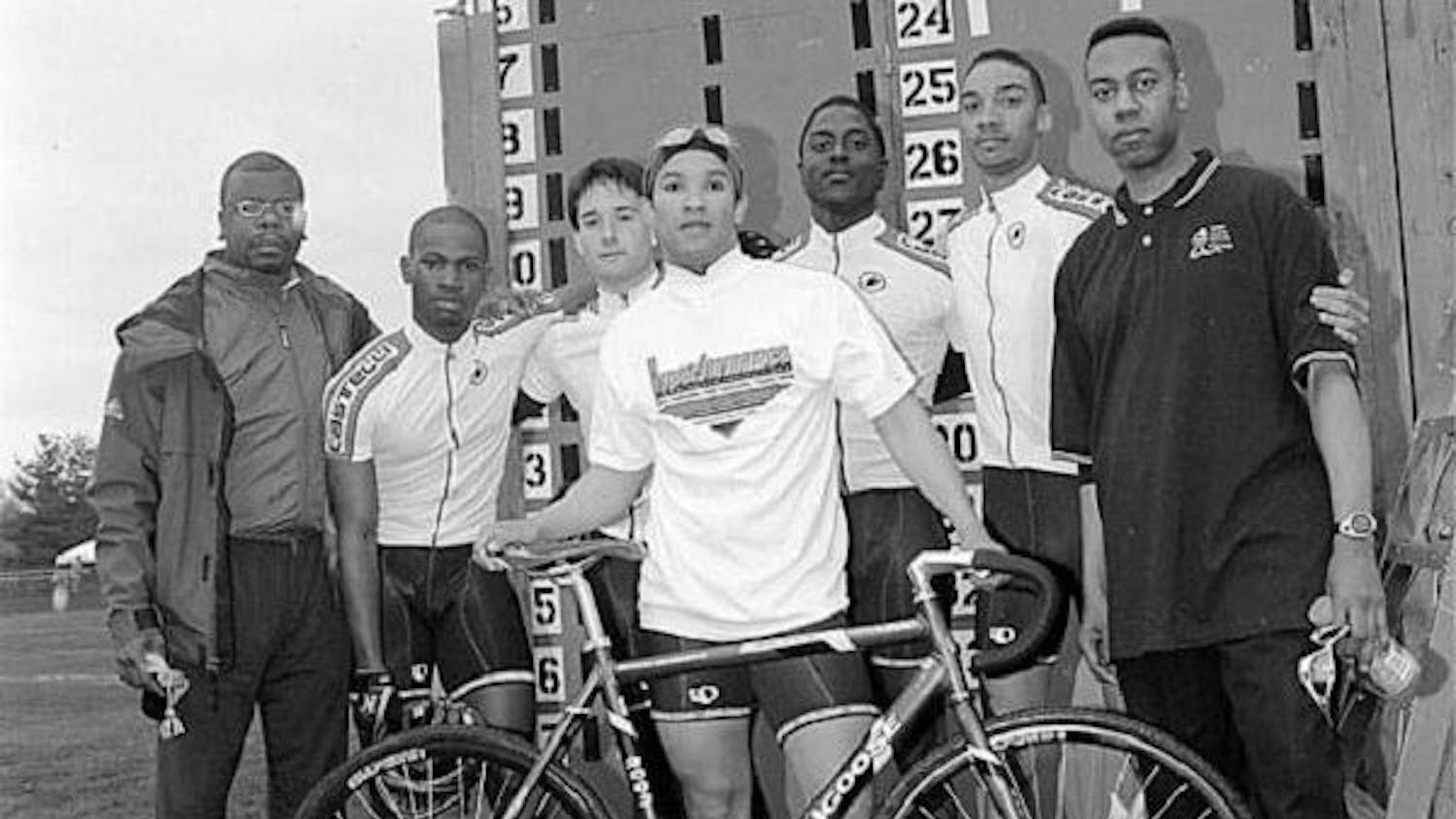By Dylan Wallace - Special to The Hoosier Network
IU senior Hayley Kwasniewski remembers her first Little 500 as a freshman in 2016 — the multi-colored balloons filling in the sky above Bill Armstrong Stadium, the voice of Bachelor hunk and IU alumnus Ben Higgins saying, “Mount your bikes," and the roar of the fans as the riders circled the track.
Growing up in Valparaiso, Indiana, Kwasniewski had never seen such a spectacle on bikes. But the next day she saw something even more striking.
She was sitting in the bleachers watching the men’s race. It featured the same IU colored balloons, an even bigger crowd and more Ben Higgins — until something changed at lap 99.
The day before, Kwasniewski watched the women’s field compete in a 100-lap race. But this time, none of the male riders were making a move to take the final lead. That’s when someone next to her told her the men’s race is 200 laps.
“I just thought both races were equal,” Kwasniewski said.
***
It’s been three years since Kwasniewski has found out the difference. Now, she is no longer a spectator as she races for the Independent Council team, which she joined her sophomore year. Heading into her final Little 500, she has a new goal in mind to accomplish in April. That goal isn’t to win or to set a personal record, it’s to change the women’s race to 200 laps.
She isn’t going at this task alone, though.
After the fall series for Little 500 concluded in October, a group of five women that Kwasniewski knows — alumna Brooke Hannon, senior Marie Wirsing, senior Maddie Sigg, senior Celine Oberholzer and junior Mily Oseid — gathered at The Tap, a trendy brewpub a few blocks from campus.
It only took a matter of time before the topic of Little 500 came up.
“We got on the topic of how the race could probably be 200 laps and everybody would be fine,” Hannon said. “It would be great because it would mean we would have equality.”
But this isn’t just the first time these thoughts have crossed any of these women’s minds. Hannon and Wirsing, who have done over 30-mile workouts, both agreed that after they finish a race, which since it’s a team of four, each rider bikes 25 laps, just about 12.5 miles, they feel like they can do more. But those thoughts were exactly that — just thoughts.
Until Oberholzer, sipping on her Freedom of Speach drink from the Tap, told the group that they are going to go for it.
“It was just that moment where I was like ‘why don’t we do something?’” Oberholzer said. “We’re capable and passionate and all care about this issue.”
She started a GroupMe of the women at The Tap, and then Wirsing added Kwasniewski. The title of the GroupMe is, “Nasty Women.”
Kwasniewski began compiling stats and created a petition over Christmas break, and once everyone was back on campus this semester, she and Oberholzer met with Little 500 race director Andrea Balzano.
Balzano gave them the steps on how to go about pitching this change. On April 26, which is tentatively scheduled and could be subject to change, Oberholzer will give a presentation to the Rider’s Council and from there, a vote will occur. If it gets two-thirds the vote, it moves up to the rules board, which requires three-fourths the vote, but Tara Vickers, the director of the IU Student Foundation, has ultimate veto power.
It seems like an easy call, even with that bureaucratic slog, but there are plenty of people who disagree as a long tradition and grumpy consensus stand in their way.
***
When the Little 500 started, in 1951, it was just a men’s race. The women got included a few years later, but in a hokey event called the, “Mini 500,” which was actually a tricycle race.
Elizabeth Bateman, who attended IU from 1968-1971 before taking a gap year and going to Maryland, competed in the Mini 500.
“It was a joke,” Bateman said. “But we had a lot of fun doing it.”
She remembers practicing with her teammates in the parking lots and trying to master the bike exchange of jumping off the tricycle and passing it on, but countless times falling and laughing about it. Despite the fun she and her friends had doing it, Bateman said it was demeaning.
“It was ridiculous,” Bateman said. “Women sports were not taken seriously at all.”
That frivolous treatment continued for decades. It wasn’t until April 22, 1988 when the first women’s Little 500 race took place.
The change didn’t spark from within the Little 500 rule-makers, either. Four women from Kappa Alpha Theta attempted to qualify for the men’s race but found themselves placed 34th at the end of qualifications, and only 33 teams race.
They took the initiative to try and create a women’s race and with the approval of IUSF, got it approved to take place one year later.
When the inaugural race took place, the fact it was half the distance as the men was never discussed much amongst the women competing.
Lee Ann Guzek Terhune, one of the Theta riders who founded the women’s race, said the focus was about finally giving women an opportunity to compete, and hopefully filling the entire 33-team field.
There are many believed reasons as to why women still aren’t riding 200 laps today.
The same year Hayley Kwasniewski rode in her first Little 500 in 2017, senior Caitlin Kamplain experienced opportunity.
Delta Tau Delta got kicked out of their fraternity house for multiple instances of hazing and as a result, Kamplain’s sorority, Theta Phi Alpha, got to move in their house in the fall of 2017.
But for Camplain and her Little 500 teammates, they were able to inhabit Delta Tau Delta’s training room in March of that year.
The room came with rollers and trainers, which are both primarily used for training indoors when the weather isn’t cooperative.
Trainers consist of a frame and a clamp to hold the bike securely, with rollers that press up against the back wheel that allows the rider to pedal without the bike moving forward. Rollers are similar, except there are two rollers for the back wheel and one for the front wheel, and riders have to balance themselves on the bike when riding in place. Both are expensive and cost anywhere from $100-$300.
Theta Phi Alpha went from having no equipment other than their personal road bikes to having expensive rollers and trainers to ride in the winter, just like the best teams.
Before that, the game plan for Kamplain and her colleagues was to go to IU’s SRSC, where the odds of getting a bike to ride on were no guarantee based on the influx of college student’s wanting to hit the stationary that particular day.
“It was really hard to train, and it’s not that like a lot of teams that don’t have those resources don’t want to put that work in,” Kamplain said. “The resources just aren’t there; it’s just so expensive. We never would’ve had that if it weren’t that Theta Phi were lucky enough to move into the Delts house.”
The lack of resources explains why the women’s race has sometimes struggled to field a full set of teams. In the 31 years the women’s 500 has existed, the full field has been maxed out to 33 teams just five times. But Kamplain believes that going to 200 laps won’t change that dynamic — and in fact is an important step toward real equality.
“Women are definitely capable of riding 200 laps,” Kamplain said. “But I don’t think the whole field is there yet.”
***
Just 32 women’s teams are set to compete in the Little 500 this year, another year without a maxed out field.
The schedule is still set for the Friday before the men’s race — the same day as IU football’s spring game — at 4 p.m. where classes aren’t cancelled unless professors personally choose to. Upping the race count extends the hours of the race, and since it’s not a Saturday 2 p.m. start, the sun could start to go down as the race goes on, causing IUSF to turn on the lights, which is money to spend.
For the 32nd straight year, the women’s race will serve as an opening act — half the distance, on a weekday, with half the crowd that shows up the following day.
“The only reason we aren’t riding 200 laps is because we are being told we can do 100,” Kwasniewski said.
The “Nasty Women” hear the talks of resources and think they can try and tackle both things at the same time. They plan to develop a training plan for a 200-lap race, as well as a donation drive where people can donate old bikes they don’t use anymore and it can be given to underfunded women’s teams, in addition to doing a big garage sale once a year for other miscellaneous materials.
They are trying to cover all grounds to make sure this rule change has the best chance of passing and to get the equal laps they think the women deserve.
The 2019 women’s Little 500 will take place on April 12, while the meeting to discuss this change isn’t scheduled until two weeks after the race. If the rule change passes, it won’t get implemented until the Little 500 in 2020, which means the women who created this petition won’t be able to compete in it.
But it’s not about them being able to brag they raced 200 laps.
“We just want to do this for the women who do Little Five at IU,” Oberholzer said. “Whether we like it or not, we’re the future, so we might as well start making good things happen while we have the resources to start.”
In an article published by the Indiana Daily Student in 1987, Spero Pulos, the assistant director at IUSF at the time, said, “Everything has to start out small,” in reference to the women’s race.
After 31 consecutive years of the race being 100 laps, Kwasniewski, Oberholzer and company believe it’s been long enough for the small start, and it’s time to go big.
More
Connor Hines
· April 25





